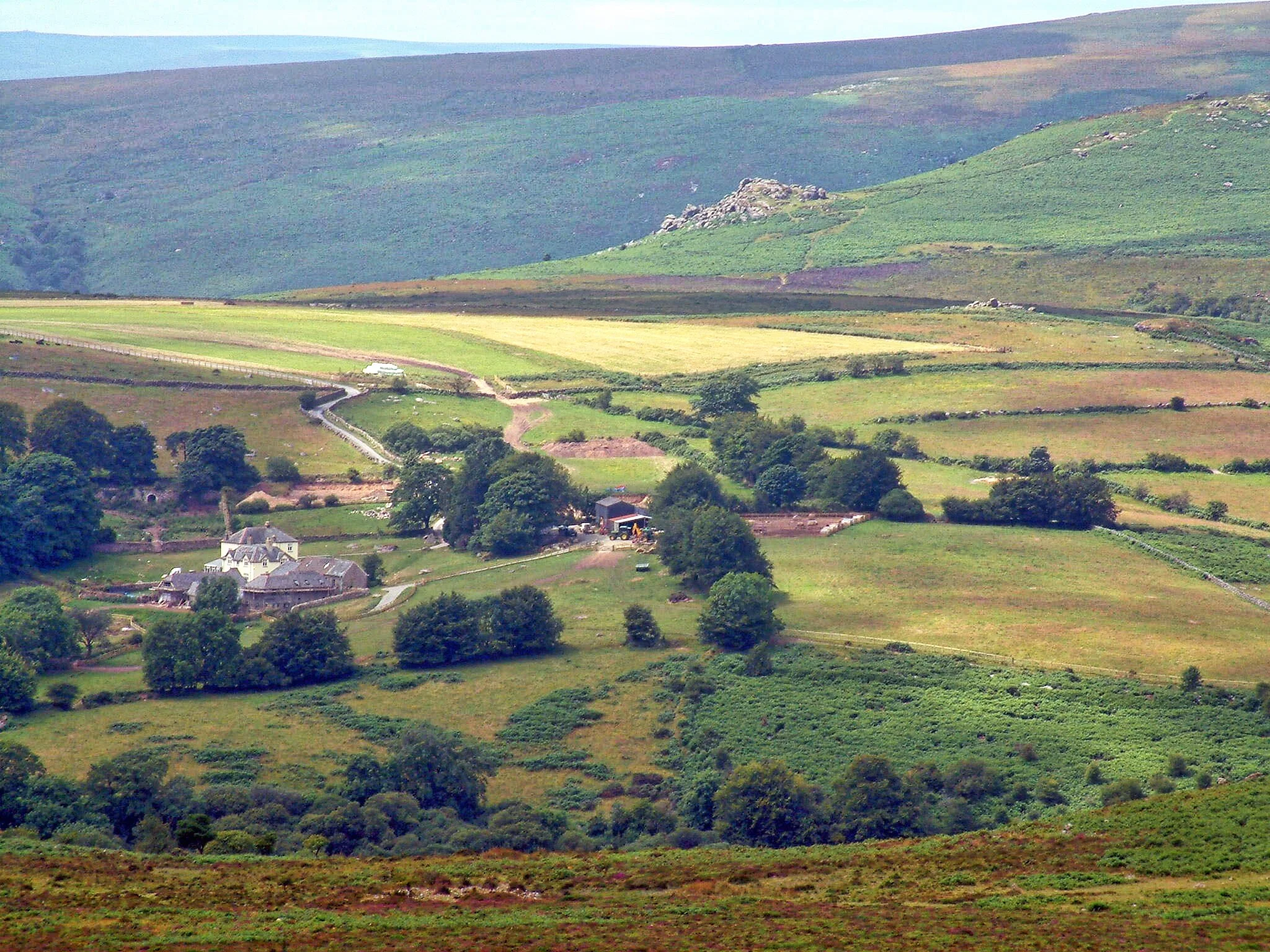Dartmoor Walk - Haytor to Widdecombe
This seven mile walk from Haytor to Widdecombe is designed to showcase Dartmoor’s seasonal weekend bus service, The Hoppa - which is good for the environment as visitors can leave their cars off the hills, and good for local businesses.
Haytor
“The Haytor Hoppa frees walkers up to do linear walks – people could leave their car in Bovey Tracey, jump on the bus, visit our information centre at Haytor, do a walk, call in at Widdecombe… It’s a way they can enjoy the moor and contribute - perhaps having meal when they reach Widdecombe,” said a man from Dartmoor National Park Authority.
Hills above Widecombe
We alighted from the bus at the new Haytor Visitor Centre. From here it’s always tempting to walk directly up to Haytor Rocks which is one of the most amazing tors on Dartmoor, but we aimed slightly to the north of the famous rock-stacks so we could reach the equally famous Haytor Quarries.
The great holes in the granite were full of schoolchildren enjoying an educational day out when we walked by – and presumably they were learning something of the history of the quarries.
Basically the story is linked to the remarkable Templer family who lived down at Stover far below - in 1820 George Templer built the extraordinary granite tramway from Haytor to link with the Stover Canal in order to export the granite being extracted from his Dartmoor quarries. The Duke of Somerset then bought the tramway, which eventually fell out of use when the quarries became uneconomic during the 1850s.
You’ll see the old granite tracks of the tramway still residing where they were placed all those years ago. I can never look at them without thinking what a terrific grinding clanking noise the trolleys must have made when being pulled along them.
We head northwest of Haytor Quarries, across the main tramway which is now part of the Templar Way, and continue across the downs to Smallacombe Rocks. From this ragged low tor you are treated to vast views of that normally hidden immensity of countryside which surrounds the mid Teign Valley area.
As you are facing north enjoying this view from the rocks, then you will see a deep valley dipping to your left – and on the hills almost directly opposite this green abyss you will spy the magnificent twin-pile of Hound Tor.
This is where we are heading – needless to say, to reach Hound Tor we must descend way down into the warm and windless valley at the bottom of which we will cross the Becka Brook. To do this we enter the upper limits of the extensive valley woodlands which stretch all the way from here to the depths of Lustleigh Cleave.
We’re not among the trees for long, though, because we’re able to cross the brook via a footbridge and climb the steep path that ascends way up past Greator Rocks. Over a century ago William Crossing was claiming these rocks to be one of the most beautiful tors on Dartmoor.
Hound Tor in snow
To me the Rocks have an almost biblical air. Shrubs and small trees sprout from crevices high above and somehow you can imagine some old First Testament prophet haunting the place armed with nothing but a staff and a foretaste of the centuries...
As was his way, Crossing wrote something sad and haunting about the place. It was to do with a maiden and her lover whose habit it was to walk here at eventide: “Then a time arrived when she came alone to the tor, for the youth had been called away to the wars. Summer followed summer, and at length the maiden's visits ceased, and the tor knew her no more. She rested in the quiet churchyard at Manaton, while her lover slept in a foreign field...”
Over the eastern shoulder of the rocks we climb, and here a track heads straight back towards Hound Tor. On the way it threads past the site of a mediaeval village where the outlines of the old homesteads are still plain to see, although no-one has lived here for some 650 years.
Hound Tor from the south
The antediluvian residents lived in longhouses which they shared with their few animals, they grew crops like oats and rye, and they tended kitchen gardens tucked around the settlement.
Exactly why they left remains a mystery, but the remains of kilns devised to dry corn might provide a clue. Dartmoor became a damp and cold place during mediaeval times and the folk, quite wisely, upped-sticks for lower climes.
View from the top of Haytor looking west
We took a shortcut from here, deciding not to visit Hound Tor in the interests of lunch at Widdecombe. So we followed the most direct route by walking southwest over Houndtor Down and turning left along the lane. The moment we saw the fields on our right give way to moorland, we took to the heath crossing Bonehill Down to reach Bonehill Rocks eventually find the smaller lane that drops down to the village.
Looking back at Haytor from the north
It was simply a matter of following this quiet byway, past the hamlet of Bonehill, to the road junction which is just two minutes walk from Widdecombe, lunch, and the bus-ride back.
Widecombe literally nestles in the moor - as its name suggests
Fact file
Basic Walk: from Haytor Visitor Centre across the moors to Hound Tor, then west via Bonehill Down to Widdecombe.
Recommended map: Ordnance Survey Dartmoor OL 28
Distance and going: seven miles, easy going.
Bus service: The Haytor Hoppa operates on Saturdays from late May until 15 September and is a circular service which starts/finishes from Haytor Visitor Centre. For further information contact the National Park Visitor Centre at Haytor, tel 01364 661520.















